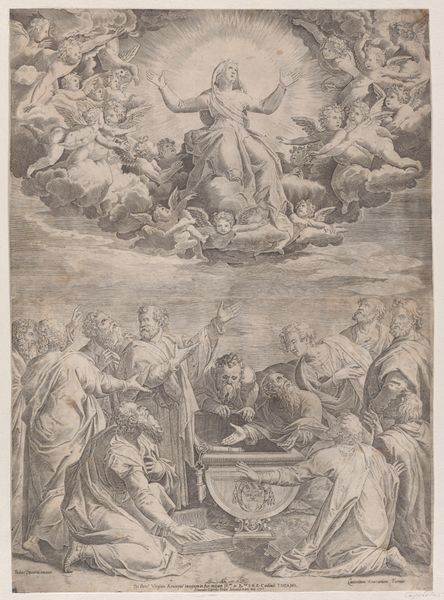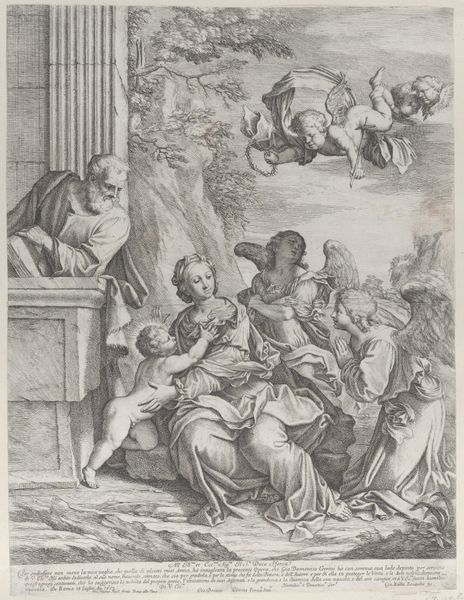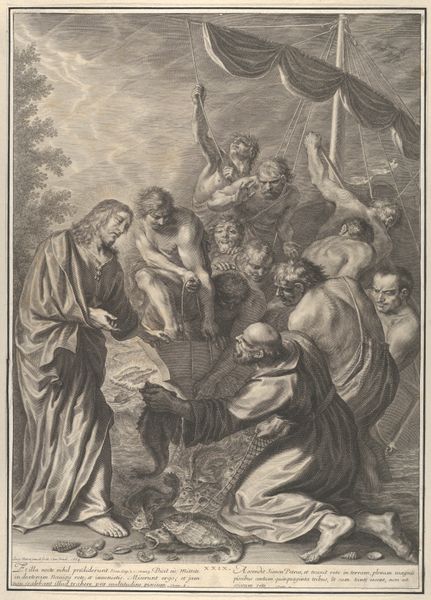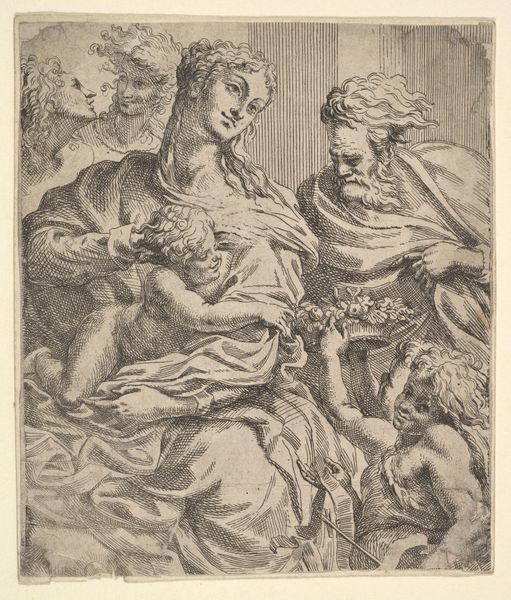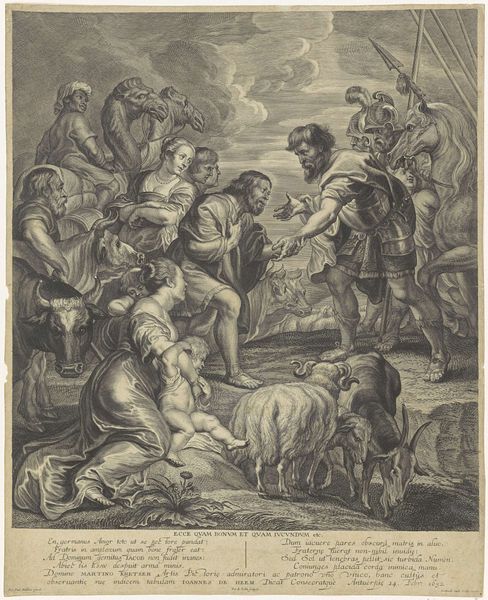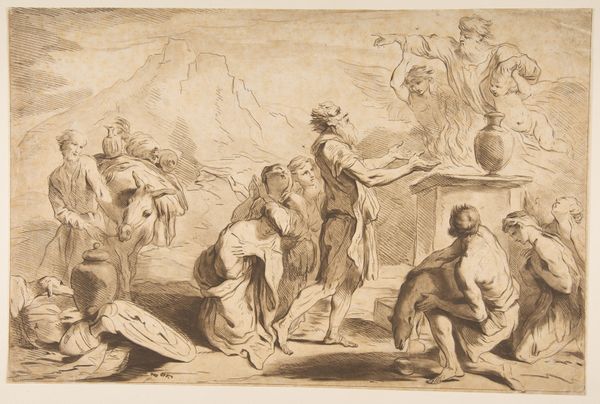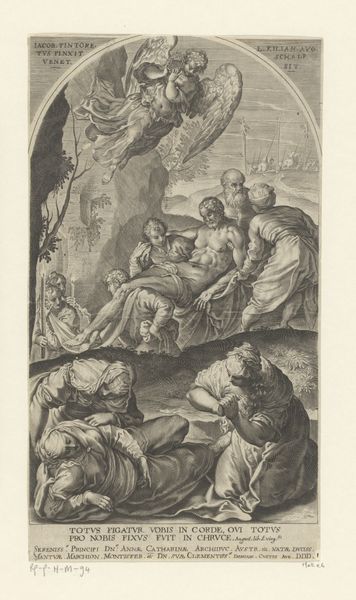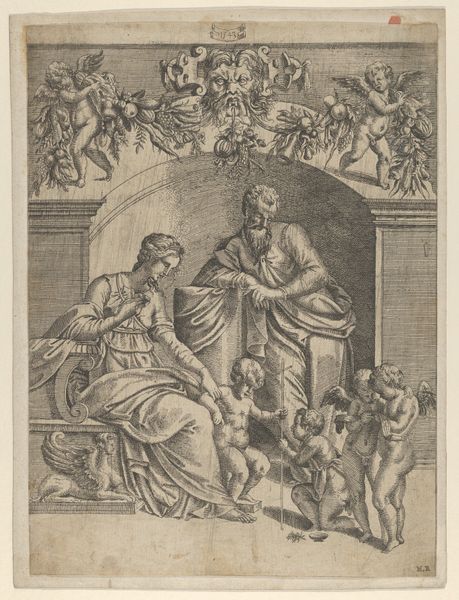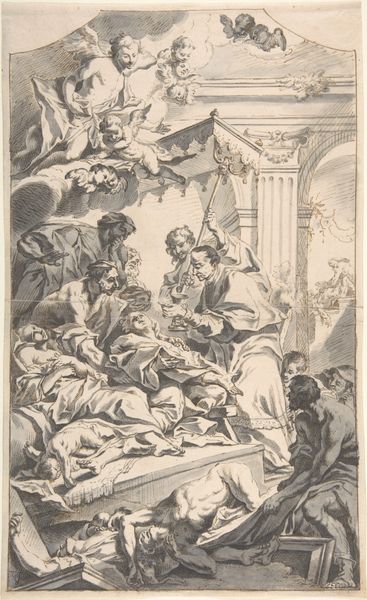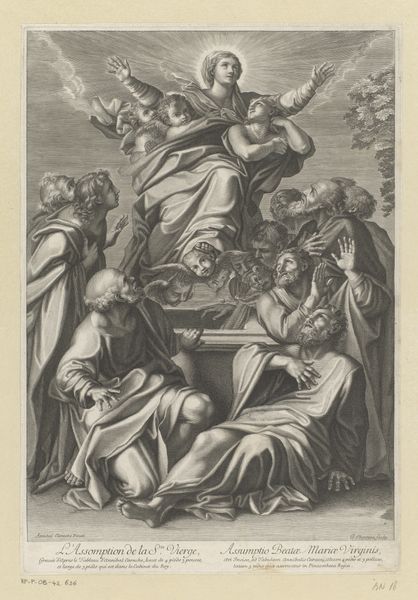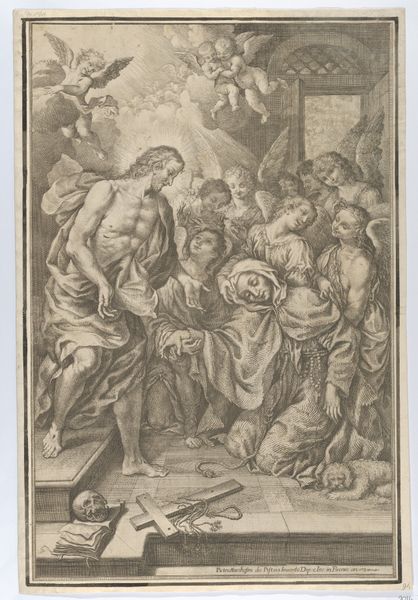
print, etching
#
narrative-art
# print
#
etching
#
figuration
#
history-painting
#
italian-renaissance
Dimensions: height 418 mm, width 398 mm
Copyright: Rijks Museum: Open Domain
Editor: So, here we have Orazio de Santis’ "Geboorte van Christus" from 1572. It's an etching, so it's all in black and white, and immediately I notice how dynamic it feels, even without color. So many figures crammed into the composition. How do you read the density of the marks and forms here? Curator: Precisely. The composition, first and foremost, establishes a structured dynamism. Note how Santis employs the hatching technique; see how the varying densities modulate the tones and direct our eye. Observe the linearity – how it both defines form and creates movement across the picture plane. What effect do you believe these create? Editor: It does give the impression of many layers, like you're peeling back ideas through the different lines that you discover across the etching. They sort of add up to the whole, don't they? Is this just characteristic of the time? Curator: Certainly, the period – the late Italian Renaissance – emphasized linearity. However, observe how Santis doesn't merely replicate established norms. Instead, his application of cross-hatching transcends simple modelling. The overlapping lines become an active element, almost an independent structure within the depicted scene. Editor: So, it’s not just about creating the illusion, but also the medium becoming part of the message itself? Curator: Correct. Consider the interplay of light and shadow. Santis masterfully crafts a range of tones solely through the density and directionality of his etched lines. The highlights almost seem to emerge from the darker recesses, not just descriptively, but expressively. It's the materiality, not just the image, that delivers a specific tone. Editor: I hadn’t quite considered that! It makes me think differently about the levels of planning that go into what seems like a very linear, almost two-dimensional format. Curator: Indeed. It is this careful attention to the material components of art-making that helps unveil layers of meaning behind the image.
Comments
No comments
Be the first to comment and join the conversation on the ultimate creative platform.

